Step 1 - Theme Options
To begin customizing your site go to Appearance -> Customizer and select Theme Options. Here's you'll find custom options to help build your site.

To begin customizing your site go to Appearance -> Customizer and select Theme Options. Here's you'll find custom options to help build your site.

To add a slider go to Theme Options -> Homepage and choose page slider. The slider will use the page title, excerpt and featured image for the slides.

To add featured content go to Theme Options -> Homepage (Featured) and turn the switch on then add the content you want for each section.

When embarking on a window installation project, having the right tools and materials is crucial to ensure efficiency, precision, and safety. This guide outlines the essentials that every homeowner or professional installer should have before starting the process.
| Material | Purpose |
| Replacement Windows | Should be selected based on size, energy efficiency rating, and style |
| Insulation Foam | Expanding foam fills gaps between the frame and wall opening |
| Caulk/Sealant | Provides a weatherproof barrier between the window frame and wall |
| Flashing Tape | Prevents water infiltration at vulnerable points like sills |
| Shims | Helps align windows perfectly during installation |
| Exterior Trim/Cladding | Provides aesthetic finishing while protecting edges against moisture |
Having these tools at hand ensures your window installation project progresses smoothly from start to finish while minimizing potential errors or issues along the way.
Accurate measurements are a critical first step in ensuring a proper window fit. Incorrect dimensions can lead to gaps, drafts, and additional costs due to improper installation or the need for adjustments. Below is a detailed guide on how to measure window dimensions accurately.
Before getting started, gather these essential tools:
– Measuring Tape: A sturdy, retractable tape measure is ideal for precise readings. – Notepad or Smartphone: To record measurements and avoid errors. – Level: To check if the existing frame is plumb and squared. – Pencil or Marker: For marking spots as needed during the process.
Installing a window involves a precise and methodical approach to ensure durability, energy efficiency, and aesthetic appeal. Below is a step-by-step guide to help you understand the professional process of window installation.
| Task | Tools Required | Time Estimate |
| Remove Old Window | Pry bar, utility knife | ~30 minutes |
| Prepare Opening | Brush/cleaner | ~20 minutes |
| Level & Secure New Unit | Level tool, drill | ~45 minutes |
| Insulate Gaps | Spray foam | ~15 minutes |
| Add Trim & Sealant | Nail gun, caulking gun | ~30 minutes |
By following these structured steps with attention to detail at every stage, professional installers ensure windows are functional, efficient, and visually appealing over time while minimizing potential complications post-installation.
When it comes to replacing windows, choosing energy-efficient options is a crucial decision that impacts your home’s energy usage, comfort, and long-term savings. With so many products available in the market, it’s essential to evaluate a few key factors before making your selection. Below are important considerations to guide your decision-making process.
Consider windows certified by organizations like ENERGY STAR®, as they meet stringent energy-efficiency standards tailored to specific climate zones.
| Material | Pros | Cons |
| Vinyl | Affordable, low-maintenance, good insulator | Limited color options |
| Wood | Excellent insulator, classic aesthetic | Requires regular maintenance (painting/sealing) |
| Aluminum | Durable and lightweight | Poor insulation properties unless thermally improved |
| Fiberglass | Highly durable and efficient | Higher upfront cost |
Evaluate which material balances aesthetics, efficiency, and cost for your specific needs.
Matching your window choice to your region’s climate ensures optimal performance year-round.
Investing in durable replacement windows translates into fewer repairs or replacements over time. Opt for manufacturers offering robust warranties that cover defects such as seal failures or frame warping—this provides peace of mind about long-term reliability.
Selecting energy-efficient replacement windows is an essential step toward lowering utility bills and creating a more comfortable living space while reducing environmental impact over time. By carefully considering these factors—from performance ratings and materials to glazing innovations—you can make an informed decision tailored specifically to your home’s requirements.
Proper preparation before starting a window installation project is essential for ensuring efficiency, safety, and success. By addressing key factors ahead of time, homeowners can minimize disruptions and ensure that installers have everything they need to complete the job effectively. Below are practical steps and considerations to prepare your home for a seamless window installation experience.
To provide an unobstructed workspace for the installers, it’s crucial to clear the area both inside and outside of your home near the windows. This will help protect your belongings while ensuring easy access to each window.
Window installation can generate dust and debris, which may affect floors or other surfaces in your home. Taking precautions can prevent damage and make cleanup easier after the project is complete.
| Surface Type | Recommended Protection Method |
| Carpet | Adhesive film or thick drop cloth |
| Hardwood Floors | Padded floor protector |
| Tile/Concrete | Standard tarps |
For safety reasons, pets and children should be kept away from work areas during installation. This ensures their well-being while allowing workers to focus on their tasks without distractions.
By following these preparation steps systematically, you’ll create an organized environment that facilitates smoother progress during window installations while protecting both your property and household members.
Ensuring that new window units are properly leveled, secured, and insulated is critical to achieving optimal performance and longevity. Poor installation can result in air leaks, water intrusion, and structural instability. Below is a guide on the proper techniques to follow for leveling, securing, and insulating your new windows.
Leveling ensures that windows function smoothly and last longer. Misaligned windows can cause issues such as difficulty operating the sashes or uneven wear on the frame.
Steps for Proper Leveling: 1. Use a Spirit Level: Place a high-quality spirit level along both the bottom and sides of the window frame to verify horizontal and vertical alignment. 2. Adjust Shim Placement: Insert shims as needed between the window unit and framing to correct any unevenness. 3. Double-Check Alignment: Before fully securing the window, recheck its alignment using your level to ensure no shifts occurred during adjustment.
Once properly leveled, it’s essential to secure the window in place to prevent movement caused by wind loads or temperature changes over time.
Proper insulation minimizes energy loss around your new windows while also reducing noise transmission from outside.
| Mistake | Impact |
| Using high-expansion foam | Can warp frames and affect proper fitment |
| Skipping shim adjustments | May lead to long-term misalignment issues |
| Overlooking moisture barriers | Increases risk of water intrusion leading to structural damage |
Take time during each step—leveling, securing, and insulating—to ensure a precise fit that maximizes durability while improving energy efficiency in your home’s overall envelope performance. A careful approach paves the way for years of trouble-free operation with minimal maintenance requirements.

Proper preparation is essential to ensure a smooth and hassle-free window replacement experience. Taking the time to get your home ready can save you from potential issues, protect your belongings, and help the installation crew work efficiently. Below are key steps to prepare your home for a successful window replacement project.
Before installation day, ensure that all areas around your windows are free from obstacles. This step will create enough space for installers to work efficiently and move tools or materials without damaging personal items.
Dust and debris are inevitable during window replacement projects. Preparing in advance can help safeguard your floors and furnishings.
The exterior area around your home is equally important when replacing windows. Installers often need access to both the inside and outside of the house.
| Task | Recommended Action |
| Trim vegetation | Cut back bushes at least 12 inches away |
| Remove outdoor décor | Relocate sculptures or hanging ornaments |
| Ensure ladder access | Create clear paths along walls |
If you have pets or small children, it’s crucial to keep them safe during the installation process.
Open communication with your installation team is vital for an efficient process.
Thorough preparation ensures both a successful installation process and long-term satisfaction with your new windows. By following these steps—clearing spaces, protecting surfaces, securing interiors, prepping outdoors, and communicating with professionals—you’ll create an environment that promotes efficient work while safeguarding your home’s belongings.
Proper preparation is key to ensuring a seamless window installation process. Whether you’re replacing old windows or installing new ones, following a few essential tips can help you avoid potential setbacks and achieve the best results possible. Below are nine crucial steps to consider for a smooth and efficient window installation process.
Selecting the right type of window for your home is critical. Consider factors such as:
– Energy efficiency: Look for windows with Energy Star ratings and low U-factor values.
– Style and design: Double-hung, casement, sliding, or picture windows should match your home’s aesthetic.
– Material: Options include vinyl, wood, fiberglass, or aluminum frames based on durability and maintenance needs.
Hiring experienced installers ensures precision and reduces the chances of costly mistakes. Look for professionals who offer:
– Proper licensing and insurance coverage.
– Positive reviews from past clients or references.
– Warranties covering both labor and materials.
Accurate measurements are critical when ordering new windows to avoid fitting issues during installation. While professionals often handle this step, you can double-check by measuring:
– The width at the top, middle, and bottom of the opening (take the smallest measurement).
– The height from sill to top at three points (again using the smallest measurement).
Pro tip: Always account for adjustments if your current openings are not perfectly square.
Plan installations during mild weather to ensure fewer disruptions caused by rain or extreme temperatures. Spring or early fall is typically ideal for this type of project.
Ensure all pathways inside your home are free of clutter to create an accessible workspace for installers: – Remove curtains, blinds, or shades from existing windows. – Clear furniture around installation areas. – Trim bushes or landscaping that obstructs outdoor access.
This step not only speeds up work but also prevents accidental damage to your belongings.
Discuss project details with installers beforehand: – Timeline for completion. – Specific installation methods (e.g., full-frame vs retrofitting). – Any special considerations like noise restrictions in your neighborhood.
Good communication leads to fewer surprises during the process.
Keep dust and debris from spreading by preparing adequately: 1. Use plastic sheeting or drop cloths over furniture near work areas. 2. Seal vents temporarily in rooms where work will occur. 3. Cover flooring near entrances where installers may track dirt indoors.
These measures help maintain cleanliness throughout your home.
| Preparation Task | Recommended Material |
| Furniture Protection | Plastic sheeting/drop cloth |
| Vent Sealing | Painter’s tape & plastic |
| Floor Coverage | Durable tarps |
For safety reasons, it’s smart to keep pets and children away from construction zones during installations so they don’t interfere with workers or risk injury due to tools being handled nearby.
Decide how old materials like removed window frames will be disposed of before starting work: – Many contractors include disposal services in their pricing—verify this in advance. – If handling disposal yourself, check local regulations concerning recycling glass or wood products responsibly.
By addressing these areas ahead of time, you’ll help ensure that your window replacement project runs on schedule with minimal stress involved at any stage of implementation.
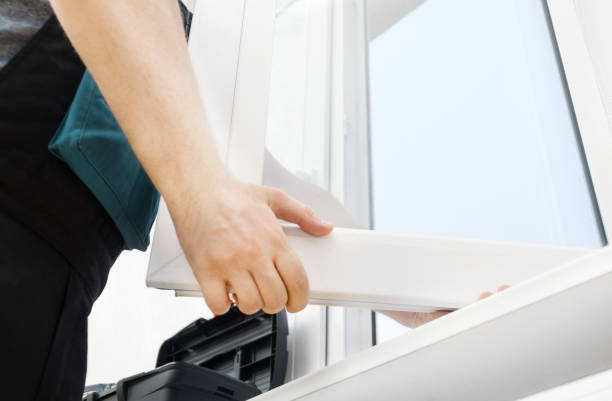
Accurately measuring a window or door opening is critical to ensuring proper installation, energy efficiency, and long-term performance. Whether you are preparing for new construction or replacing old windows and doors, precise measurements can save time, reduce errors, and help you avoid costly adjustments. Follow this step-by-step guide to measure openings correctly.
Write down all three measurements and note which is smaller. Always use the smallest measurement as your final width to ensure a good fit.
Tip: If any measurement differs significantly (e.g., more than 1/4 inch), it may indicate that additional framing adjustments are required.
Check that there are no obstructions in this area that could interfere with installation.
This step helps confirm that there’s enough space for securing insulation materials around frames while maintaining thermal efficiency.
| Measurement Area | Required Action | Notes |
| Width | Take smallest reading across top/middle/bottom | Prevents over-sizing |
| Height | Use narrowest reading along edges | Ensures proper alignment |
| Diagonal Length | Compare both diagonal measures | Confirms structural squareness |
By following these steps rigorously, you’ll set yourself up for a smoother installation process while minimizing potential delays due to improper fitment or unforeseen structural challenges later on during construction projects involving windows/doors replacements/constructions
Taking these precautions ensures that installers can work efficiently without risking damage to your belongings.
| Task | Completed (✔/✘) |
| Remove blinds/curtains | |
| Move nearby furniture | |
| Cover remaining furniture | |
| Lay protective floor coverings | |
| Declutter outdoor areas near windows | |
| Ensure clear access pathways |
By following this checklist systematically, you’ll create a safer environment while also speeding up the overall process.
Proper preparation before window replacements not only minimizes disruptions but also helps protect valuable household items from potential damage. Both homeowners and contractors benefit when there’s clear access combined with thorough protective measures in place.

Proper preparation of your home is critical for a seamless and efficient window replacement process. Clearing paths and protecting furniture not only ensures the safety of your belongings but also minimizes disruptions during the project. Below, we provide detailed guidance on how to prepare your space effectively.
| Item Category | Action | Recommended Material/Tool |
| Furniture | Cover with protective sheets | Drop cloths, plastic covers |
| Rugs | Roll up and store elsewhere | Rope/tape for securing rolled rugs |
| Wall Decorations | Remove items temporarily | Bubble wrap for fragile objects |
| Electronics | Relocate far away from active zones | Storage bins for small devices |
Ahead of the installation date, discuss preparations with your contractor to align expectations regarding workspace needs. Some teams may provide extra protective materials like tarps or suggest additional measures specific to their process.
By following these steps—clearing paths, protecting furniture effectively, managing dust spread, and maintaining open communication—you create an organized environment that supports both efficiency and safety during window replacements.
Window installation involves various activities that could pose safety risks to pets and children if they remain in the home. From debris and loud noises to the presence of unfamiliar people, ensuring a secure environment for all household members is crucial. Relocating pets and children during the installation process not only keeps them safe but also ensures the project proceeds efficiently without interruption. Below is a detailed look at why this step is essential, as well as practical tips for managing the process.
| Benefit | Explanation |
| Enhanced Safety | Minimizes injury risk caused by tools, debris, loud noises, or open spaces |
| Reduced Stress | Prevents anxiety in pets and young ones caused by unfamiliar sounds/people |
| Ensures Installer Efficiency | Eliminates interruptions so workers can focus on completing tasks promptly |
To make this process seamless: – Notify your window installers ahead of time about any safety concerns related to kids/pets. – Remove pet beds/toys from work zones. – If relocating isn’t possible due to scheduling conflicts, monitor their behavior closely throughout the project.
Taking proactive measures will contribute significantly toward creating an efficient window replacement process while ensuring every member of your household remains safe from potential risks during this period.
Proper planning for post-installation cleanup and energy efficiency maximizes the benefits of your new windows. Once the installation is complete, taking a strategic approach to cleaning and optimizing energy use ensures that your windows perform well while keeping your home in pristine condition. Below is a guide on how to achieve this effectively.
| Task | Benefit |
| Thorough Cleaning | Prevents allergies by minimizing dust accumulation after installation |
| Proper Insulation Adjustments | Reduces heating and cooling costs through enhanced thermal performance |
| Recycling Materials | Promotes sustainability by reducing waste sent to landfills |
By combining careful cleanup practices with energy-conscious strategies, you can enjoy both aesthetic improvements and cost savings following your window installation project while fostering an eco-friendly household environment at the same time.
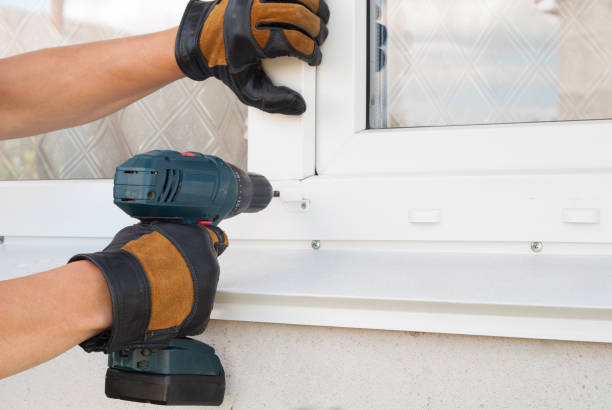
Replacing your windows is a significant investment that can improve your home’s energy efficiency, curb appeal, and overall comfort. Before you begin the process, it’s important to weigh various factors to ensure you make the right decision for your home and budget. Below are ten essential considerations to keep in mind.
– Vinyl: Affordable, low maintenance, and energy-efficient but less customizable in appearance.
– Wood: A classic option offering superior aesthetics but requiring regular upkeep to prevent rot or warping.
– Aluminum
– Fiberglass: Long-lasting and low-maintenance with better insulation properties but higher upfront costs.
– Laminated glass for enhanced security and soundproofing.
Look for windows with an ENERGY STAR® rating or high U-value/R-value ratings for optimal insulation performance: | Term | Definition | |—————-|—————————————————————————–| | U-value| Measures how well a window prevents heat loss (lower values are preferable).R-value| Indicates resistance to heat flow (higher values are better).
Energy-efficient windows can reduce heating and cooling expenses over time while keeping indoor temperatures consistent.
Even the best-quality windows will underperform if they’re not installed properly. Ensure you hire experienced contractors who are licensed and insured.
Windows can vary widely in price based on material, size, brand, and customization needs. Set a realistic budget that considers both product costs and labor fees.
Your region’s weather heavily influences the type of windows you should choose:
– Hot climates may benefit from solar control glass. – Cold climates often require insulated frames with multiple panes.
Research products designed specifically for your environment.
Select window designs that complement your home’s architectural style: – Casement or awning windows work well in modern homes. – Double-hung windows suit traditional styles like colonial or Victorian homes.
Maintaining visual harmony enhances curb appeal.
Windows play a crucial role in home safety: – Reinforced locks or multi-point locking systems provide added protection. – Laminated or tempered glass resists breakage better than standard panes.
Consider how much time you’re willing to invest in maintaining your new windows: – Vinyl requires minimal care but offers limited color choices. – Wood offers greater customization but demands regular staining or painting.
Review warranties provided by manufacturers or contractors to understand what is covered (e. g. , glass breakage, hardware defects) and how long the coverage lasts.
Making an informed decision about replacing your windows ensures long-term benefits such as improved energy efficiency, reduced maintenance costs, and enhanced aesthetic value for your home.
Selecting the right type of glass for your windows is a critical aspect of any window replacement project. The right choice can impact energy efficiency, noise reduction, and overall comfort in your home. Before making a decision, it’s essential to understand the different types of glass available and how their performance varies. Below, we explore key factors to consider when evaluating glass types and performance metrics.
| Metric | Description |
| U-Factor | Measures the rate at which heat escapes through the window; lower values indicate better insulation properties. |
| Solar Heat Gain Coefficient (SHGC) | Indicates how much solar radiation passes through the glass; lower SHGC values reduce heat gain from sunlight in warmer climates. |
| Visible Transmittance (VT) | Represents how much natural light filters through the glass; higher VT values mean more daylight enters your space without obstruction. |
| Sound Transmission Class (STC) | Rates the ability of the window to block sound; higher STC values are preferred for noise reduction purposes. |
By understanding these factors and carefully assessing your priorities—whether it’s energy efficiency, security, aesthetics, or noise control—you’ll make well-informed decisions that improve the functionality and appearance of your home’s windows long-term.
Replacing your windows is a significant investment that can enhance your home’s functionality, energy efficiency, and aesthetic appeal. However, determining the right time to replace your windows isn’t always straightforward. By assessing certain factors, you can identify when it’s time to take action. Below are key indicators and considerations to help you decide if a window replacement is necessary.
| Factor | Consideration |
| Age of Your Home/Windows | Most windows last 15–30 years; if yours are older, replacement may be due. |
| Seasonal Conditions | Replacing windows before extreme weather (summer/winter) ensures comfort. |
| Home Renovation Plans | Consider aligning window replacement with other remodeling projects for cost efficiency and convenience. |
It’s worth noting that not all issues demand full replacement—sometimes repairs are enough:
– Minor cracks in single-pane glass can be fixed with resin solutions. – Re-caulking around panes may address small air leaks. – Replacing damaged weatherstripping can restore proper insulation temporarily.
However, these are typically short-term fixes that won’t resolve deeper structural damage or improve energy performance significantly.
Evaluating these aspects will help you determine whether it’s time for a full window replacement—or whether interim repairs might suffice until future upgrades become feasible.
Improving the energy efficiency of your home through window and door updates is a smart investment that can lead to reduced energy bills, increased comfort, and a smaller carbon footprint. When it comes to upgrading these essential components, there are several factors and strategies homeowners should consider to maximize the efficiency gains.
Doors also play a critical role in your home’s overall energy efficiency.
| Feature | Average Additional Cost | Potential Savings on Utilities (%) | Payback Period (Years) |
| Low-E Glass | $50–$100 per window | 12–15% | 2–5 |
| Double-Pane vs Single-Pane | $100–$300 per window | 20–25% | 3–7 |
| Insulated Door Core | $200–$500 per door | 10–20% | 4–8 |
By selecting high-performance materials and following best practices during installation, updating your windows and doors can become one of the most impactful ways to enhance both the comfort and efficiency of your living space over time.
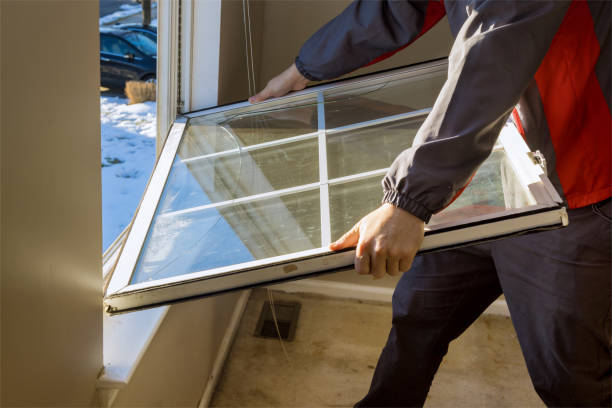
The exterior of your home is the first impression visitors receive, and front doors and windows play a critical role in setting the tone. Investing in stylish, well-designed, and functional doors and windows can significantly enhance your home’s curb appeal while also boosting its overall value. Here’s how you can make thoughtful choices for your front entryway.
The front door serves as the focal point of your home’s exterior.
| Door Material | Benefits | Maintenance Required |
| Wood | Classic aesthetic | High |
| Steel | Strong security & energy efficiency | Low |
| Fiberglass | Weather-resistant & stylish | Minimal |
Windows are another critical component when creating an inviting exterior. Well-placed and thoughtfully designed windows not only brighten interiors but also contribute to the overall style of your home.
| Window Style | Architectural Compatibility |
| Double-Hung | Perfect for Colonial/Traditional |
| Picture Window | Best for Modern Homes |
| Casement | Versatile across styles |
Curb appeal isn’t just about looks—it’s also about practicality: – Select energy-efficient options like double-paned glass to reduce thermal transfer. – Opt for impact-resistant glass if you live in areas prone to storms. – Ensure both doors and window locks meet current safety standards.
By strategically choosing front doors and windows that align with your home’s architecture and needs, you’ll create an inviting exterior that speaks volumes about your property’s character.
The exterior of your home creates the first impression, making it essential to select front doors and windows that enhance its curb appeal. Upgrading these features not only improves the aesthetic value of your home but can also increase its overall market value. Below, we outline key points to consider when choosing front doors and windows that truly elevate your home’s appearance.
To achieve a cohesive exterior design: – Match materials (e. g. , wood-framed windows with wooden doors).
– Choose complementary colors or finishes for consistent visuals across all entries/exits of the house. – Integrate similar glass accents on both the door panels and nearby windows for alignment.
By thoughtfully combining functionality with aesthetic details in your front doors and windows, you can significantly transform the exterior appeal of your home while reflecting personal style preferences effectively.
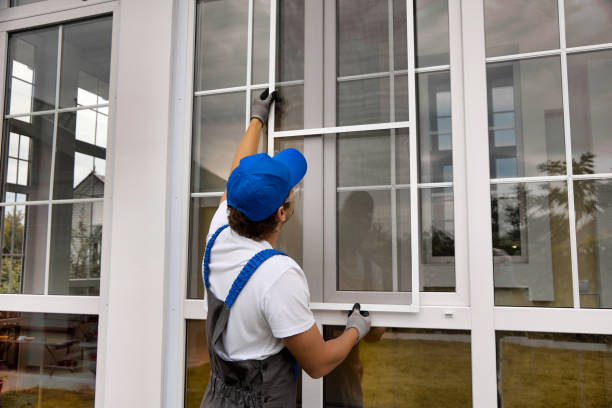
Selecting the right replacement vinyl windows for your home can significantly enhance its aesthetics, improve energy efficiency, and increase overall comfort. With a wide variety of window styles, materials, and features available in today’s market, it’s essential to make an informed decision. Below is a comprehensive guide to help you choose the best replacement vinyl windows tailored to your needs.
| Style | Features | Ideal For |
| Double-Hung | Easy cleaning; both sashes open | Bedrooms & living rooms |
| Casement | Hinged at sides; excellent airflow | Kitchens & hard-to-reach areas |
| Sliding | Slides horizontally; compact design | Small spaces & modern homes |
| Bay/Bow | Creates extra space; dramatic effect | Living rooms & dining areas |
| Picture | Fixed; offers unobstructed views | Scenic locations |
Even the highest-quality replacement vinyl window will underperform if not installed correctly. It’s essential to hire skilled professionals who can ensure proper sealing and alignment during installation. Poor installation can lead to air leaks, water damage, and reduced energy efficiency.
Taking time to assess your specific needs while considering these factors will help you make an informed decision about replacing old windows with high-quality vinyl options that provide long-term value for your home.
Choosing the right replacement vinyl windows for your home is a decision that impacts not just the aesthetics of your property, but also its energy efficiency, durability, and overall value. Below are 12 key factors to help you make an informed choice.
Energy-efficient windows can reduce heating and cooling costs over time. Look for features such as: – Low-E (Low-Emissivity) Glass: Minimizes heat transfer without sacrificing natural light. – Double or Triple Glazing: Provides better insulation by trapping air or gas (e.g., argon) between panes. – ENERGY STAR Certification: Ensures the window meets high standards for energy savings.
Consider how different styles impact functionality and appearance: – Double-Hung Windows: Both sashes move up and down, allowing easy ventilation. – Casement Windows: Hinged at the side; open outward for maximum airflow. – Sliding Windows: Ideal for wide horizontal spaces.
Pick a style that complements your home’s architectural design while meeting practical needs.
Vinyl frames are durable, low-maintenance, and affordable: – Require minimal upkeep due to their resistance to peeling, cracking, or fading. – Available in various colors and finishes to match your home’s interior and exterior.
Modern vinyl windows offer customizable glass options tailored to specific needs: | Glass Type | Benefits | |————————|—————————————–| | Tempered Glass | Increased safety with shatter-resistant properties. | | Laminated Glass | Reduces noise levels and improves security. | | Tinted Glass | Reduces glare and solar heat gain. |
Vinyl windows provide long-term reliability when made from high-quality materials: – Avoid heavily recycled vinyl materials that may compromise strength. – Look for warranties that cover manufacturing defects.
A professional installation ensures proper sealing, preventing drafts or water leakage: – Confirm the installer is certified or licensed if required in your area. – Ask about weatherproofing techniques used during installation.
Choose windows with customizable features like grid patterns, hardware finishes, or decorative glass to enhance both aesthetics and functionality.
Consider safety elements such as: – Multi-point locking systems for added security. – Impact-resistant glass in storm-prone areas.
While affordability is important, focus on value rather than choosing the cheapest option: – Invest in trusted brands with strong reputations for quality products.
Higher upfront costs may save money over time through reduced energy bills or fewer repairs.
Vinyl windows require minimal maintenance compared to wood or aluminum alternatives: – Cleaning typically involves soap and water only.
Avoid abrasive cleaners that might scratch surfaces.
Examine warranty details closely: – Check coverage length (e.g., lifetime vs limited). – Ensure it includes protection against material defects or failed seals.
Many modern vinyl windows are eco-friendly due to their recyclable materials and energy-saving benefits: – Products made using sustainable practices help reduce environmental waste.
By considering these factors carefully, you’ll select replacement vinyl windows that align perfectly with your home’s needs while providing lasting performance benefits over time.
Choosing the right replacement windows is a critical decision for homeowners. Not only do high-quality windows enhance the aesthetic appeal of your home, but they also improve energy efficiency, provide better insulation, and increase property value. Here’s a guide to help you select top-notch replacement windows that meet your needs.
| Frame Material | Pros | Cons |
| Vinyl | Low maintenance, affordable, energy efficient | Limited color choices |
| Wood | Classic aesthetic, excellent insulation | Requires regular maintenance |
| Aluminum | Strong, lightweight | Poor thermal performance |
| Fiberglass | Durable, low maintenance | Higher upfront cost |
Even if you choose top-of-the-line replacement windows, improper installation can undermine their performance benefits. Make sure to hire professional installers who have experience working with your selected window type and brand.
By thoroughly assessing material quality, energy performance features, warranty terms, and installation expertise ahead of time, you’ll be able to select high-quality replacement windows that align perfectly with both your budget and lifestyle needs while ensuring long-lasting satisfaction in your home environment.

Selecting the ideal vinyl windows for your space is an essential step in enhancing a home’s aesthetic appeal, energy efficiency, and overall functionality. With numerous styles, designs, and performance options available in the market, it’s important to focus on key factors that match your needs while ensuring long-term value. Below is a detailed guide to help homeowners make an informed decision.
Before choosing replacement vinyl windows, assess the specific needs of each room. Different spaces have unique requirements based on lighting, ventilation, and privacy preferences. Consider the following:
– Living Rooms: Opt for larger window styles such as picture windows or bay windows to maximize natural light and curb appeal.
– Bedrooms: Double-hung or casement windows offer functionality with improved ventilation while maintaining privacy.
– Bathrooms: Frosted or textured glass in smaller-sized windows ensures privacy while allowing adequate natural light.
– Kitchens: Sliding glass or casement windows are practical near countertops or sinks for easy operation.
| Feature | Budget-Friendly Options | Premium Options |
| Glazing | Single-pane | Double/triple pane with Low-E coating |
| Frame Design | Standard white | Custom colors/textures |
| Ventilation Style | Fixed | Casement/tilt-and-turn |
| Energy Ratings | Standard glass | ENERGY STAR certified models |
Even with the best replacement vinyl window choice on hand, improper installation can lead to drafts and inefficiency over time. Ensure professional installation by certified experts who follow local building codes and standards.
Key benefits of professional installation include:
– Proper sealing to prevent air leakage. – Precise alignment for smooth operation. – Enhanced longevity due to correct mounting techniques.
Choosing the right vinyl windows involves balancing aesthetic appeal with practical considerations such as energy savings and durability. By evaluating space requirements alongside key product features like frame quality and glazing options, homeowners can ensure they invest in durable solutions tailored for any area of their home.
A successful window installation requires attention to detail, proper planning, and adherence to high-quality standards. Elevating installation practices ensures not only long-term performance but also enhances the appearance, comfort, and energy efficiency of your home. Below is a comprehensive look at the key aspects every homeowner should understand about setting higher standards for window installation.
| Mistake | Impact | Solution |
| Incorrect Measurements | Leads to gaps or forced fitting | Always measure twice before ordering replacement windows |
| Skipping Insulation | Results in drafts and energy inefficiency | Use appropriate insulating materials |
| Poor Sealant Application | Allows water infiltration causing damage | Apply sealants evenly without leaving gaps |
| Neglecting Building Codes | May result in fines or structural issues | Work with certified professionals familiar with local codes |
By understanding these principles, homeowners can collaborate effectively with professionals and ensure their investment delivers long-term satisfaction.
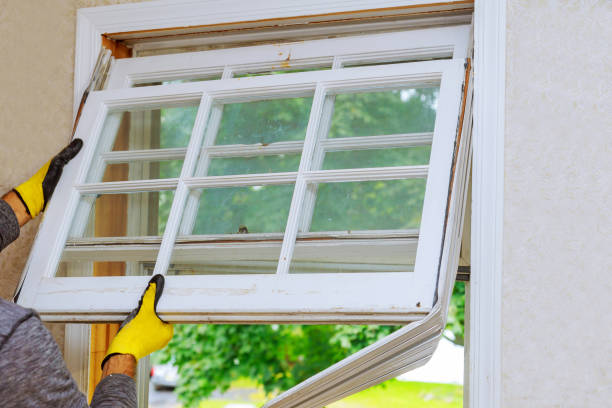
Installing replacement windows can significantly improve your home’s energy efficiency, aesthetic appeal, and overall value. However, before you begin the process, there are several critical factors to consider. Proper preparation and research can save time, money, and effort while ensuring the project meets your expectations. Below are some essential things to know before starting your replacement window installation.
Having a clear understanding of your needs will help narrow down choices.
Choose a style that complements the function and layout of each room in your home.
| Frame Material | Benefits | Drawbacks |
| Vinyl | Energy-efficient, low-maintenance | Fewer customization options |
| Wood | Classic look; excellent insulation | Prone to moisture damage if untreated |
| Aluminum | Lightweight; modern appearance | Less energy-efficient |
| Fiberglass | Durable and versatile | Higher upfront cost |
Evaluate these options based on your budget and long-term maintenance preferences.
Investing in energy-efficient products can lead to significant savings over time by reducing heating and cooling costs.
Improperly installed windows can result in air leakage, water damage, or reduced lifespan.
Review warranty details carefully before making a purchase—both product warranties (for defects) and workmanship warranties (for issues related to installation). Choose providers offering comprehensive coverage for peace of mind.
Making informed decisions prior to installing replacement windows ensures both immediate satisfaction with results as well as lasting value over time through improved functionality and cost savings.
Proper window installation is critical when it comes to improving your home’s energy efficiency. Windows play a significant role in regulating indoor temperatures, reducing energy waste, and lowering utility costs. Even the most energy-efficient windows can fail to perform as intended without proper installation techniques. Below, we explore how precise installation methods can enhance your home’s energy performance and comfort.
Proper techniques not only maximize the benefits of replacement windows but also help extend their lifespan.
| Factor | Professional Installation | DIY Installation |
| Tools Required | Included with service | Must be purchased/borrowed |
| Precision & Accuracy | High | Varies by skill level |
| Time Investment | Typically quicker | Tends to take longer |
| Warranty Coverage | Often included | None |
Hiring a certified installer ensures you achieve maximum energy efficiency with minimal risk of errors.
When done right, proper window installation delivers several benefits: – Reduced heating/cooling costs – Improved indoor comfort – Lower environmental impact through decreased energy consumption – Enhanced property value due to modern upgrades
By combining high-quality windows with proper techniques during installation, homeowners can significantly improve their home’s overall energy efficiency while enjoying long-term savings on utilities.
Upgrading to modern replacement vinyl windows is a home improvement project that offers numerous benefits. These windows are designed to provide improved functionality, aesthetics, and energy efficiency. If you’re considering replacing your old windows, here’s an overview of the key advantages vinyl windows bring to your home.
According to the U.S. Department of Energy (DOE), energy-efficient windows can reduce overall utility bills by up to 25%.
| Feature | Benefit |
| Low-E Glass Coating | Reduces UV rays and heat transfer |
| Double/Triple Glazing | Improves insulation |
| Argon Gas Fills | Enhances thermal resistance |
Simply cleaning with mild soap and water keeps them looking new for years.
This durability ensures a long lifespan, often lasting decades without the need for replacement.
Additionally, custom designs can match any architectural style or personal taste.
Many modern vinyl window models feature soundproofing technology through multiple glazing layers and insulated frames. This helps create a quieter indoor environment by minimizing external noise pollution from traffic or neighbors.
Though initial costs may vary depending on the model and customization options chosen, replacement vinyl windows are typically among the most affordable window materials on the market today. Their long-term savings from reduced maintenance costs and lower energy bills make them a smart investment.
In summary, upgrading your home with modern replacement vinyl windows is a decision that provides substantial benefits across multiple dimensions—energy savings, durability, aesthetic appeal, noise reduction, and more—all while requiring minimal upkeep over time.

The process begins with an initial consultation where professionals assess your home’s current windows and take precise measurements. Accurate measurements are crucial for ensuring a snug fit and avoiding air or water leaks. During this phase:
– Installers will inspect the condition of the surrounding window frames for any signs of damage or rot.
– They may recommend repairs or replacements if structural issues are present.
– Measurements for custom-fit windows are recorded to guarantee proper dimensions for fabrication.
On installation day, the team will carefully remove your existing windows while minimizing disruption to your home. This step typically involves:
– Removing window sashes, frames, or glass panels without damaging nearby walls or trim.
– Proper disposal of old materials in adherence to local recycling regulations (if applicable).
Pro Tip: Clear furniture or decorations near window openings prior to installation day to give installers ample space.
Once old windows are removed, preparing the opening is a critical step before installing new units:
1. Inspecting the Opening – Installers check for any uneven surfaces or gaps that need adjustments. 2. Cleaning – Dust, debris, or leftover sealant from previous installations is cleared out. 3. Repairs – If necessary, minor repairs are conducted on damaged window sills or frames.
A properly prepared opening ensures that your new windows will fit securely and perform optimally.
This stage involves setting up your new windows with precision and care:
– The installer carefully positions the new unit into place within the prepared frame. – Shims are used to level and adjust alignment where necessary. – Anchors and screws secure the frame firmly into place.
Professionals make sure that every aspect of installation meets manufacturer specifications as well as local building codes.
| Step | Purpose |
| Placing shims | Ensures alignment and prevents future warping |
| Securing hardware | Stabilizes frame against external forces |
Sealing is essential for energy efficiency and weatherproofing:
– A high-quality caulking material is applied around edges to seal gaps. – Expanding foam insulation may be used in larger spaces between walls and frames.
These steps prevent drafts, moisture intrusion, and reduce energy loss over time.
Before completing the job, professionals conduct a final review:
1. All hardware (locks/latches) is tested for functionality. 2. Windows are opened/closed multiple times to ensure smooth operation. 3. Clean-up services include removal of debris like packaging materials or leftover caulk.
Knowing what happens during professional window installation can alleviate concerns about disruptions or unexpected costs while helping you understand how experts achieve durable results tailored specifically for your home’s needs.
Proper insulation and sealing are critical steps in ensuring your new windows are energy-efficient, durable, and free from drafts or moisture leaks. Here’s a detailed guide to help you understand the process of insulating and sealing your newly installed window frames.
Installing new windows isn’t just about aesthetics; the way they’re sealed and insulated significantly impacts:
– Energy Efficiency: Properly sealed windows prevent heat loss in winter and reduce cooling costs in summer.
– Moisture Prevention: Quality seals block water from entering your home, reducing the risk of mold or structural damage.
– Soundproofing: Efficient insulation creates a barrier against outside noise for a quieter indoor environment.
| Material | Purpose |
| Expanding foam | Fills gaps between window frames and walls. |
| Silicone caulk | Creates a flexible, weatherproof seal. |
| Backer rod | Provides support for caulking in larger gaps. |
| Utility knife | Used to clean edges before applying materials. |
| Spray bottle (water) | Helps smooth out caulk for an even finish. |
By following these steps carefully, you ensure your windows remain well-insulated against external elements while maximizing energy savings over time.
Proper preparation is key to ensuring your window installation process goes smoothly and efficiently. By taking the right steps beforehand, you can avoid unnecessary delays, protect your home from dust and debris, and help the professionals complete their work with minimal interruptions. Below are practical tips and insights to help you prepare your home effectively.
To provide installers with easy access to your windows, take time to declutter both the interior and exterior spaces around them.
Steps to clear the area:
– Remove Window Treatments: Take down curtains, blinds, shades, or other treatments on all windows being replaced.
– Clear Furniture: Move any furniture or decorative pieces (tables, chairs, rugs) at least 3-4 feet away from windows.
– Outdoor Preparation: Trim bushes or trees near the windows and remove any outdoor furniture or objects obstructing access.
This will create a safe workspace for installers and prevent accidental damage to your belongings.
A little protection goes a long way toward keeping your home clean during installation.
This will enable workers to focus on their task without unnecessary disruptions.
The presence of sharp tools, broken glass, and construction noise makes it essential to secure pets and children during window installation.
Tips for safety:
– Keep pets in a separate room or outside until work is completed. – Inform children about restricted areas during installation. – Consider arranging childcare if you anticipate long periods of noise disturbance.
By taking these precautions, you not only ensure everyone’s safety but also allow the crew to work more efficiently.
If there are specific details about your home that installers should know—such as fragile walls or historical features—communicate these ahead of time. This helps prevent accidental damages while respecting unique aspects of your property.
Additionally:
– Verify start times with the installer company so you’re prepared when they arrive. – Review project timelines so everyone stays aligned on expectations.
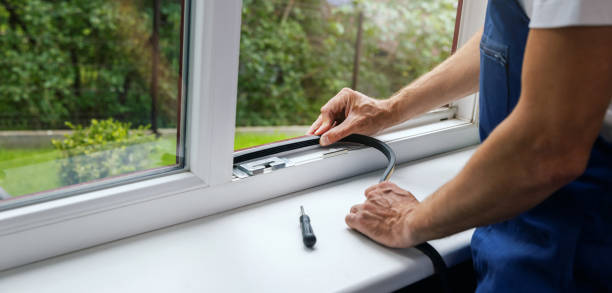
| Task | Action Needed |
| Declutter Work Areas | Remove blinds/curtains; move furniture away from windows |
| Protect Surroundings | Cover furniture; seal off nearby rooms |
| Ensure Installer Access | Unlock doors; clear pathways |
| Secure Pets & Kids | Keep out of work zone; inform about restricted areas |
| Communicate Instructions | Share important details such as delicate features |
Following these steps ensures not only an efficient installation process but also peace of mind knowing you’ve done everything possible for success. By preparing thoughtfully in advance, you’ll make both the experience smoother for yourself and more productive for the professionals working in your home.
Selecting the right windows for your home is one of the most important decisions you’ll make during a renovation or construction project. Windows can impact not only your home’s aesthetics but also its energy efficiency, comfort, and resale value. Below are expert tips to guide you in making an informed decision that meets both your functional and design needs.
Matching window designs with your home’s character ensures a cohesive and polished appearance.
Investing in energy-efficient options may cost more initially but saves money over time through reduced energy bills.
| Material | Pros | Cons |
| Vinyl | Affordable, low maintenance | Limited color options |
| Wood | Classic look, excellent insulation | Requires regular upkeep |
| Aluminum | Durable, modern aesthetic | Poor insulator if not thermally broken |
| Fiberglass | Strong, energy-efficient | Higher price point |
| Composite | Combines durability & low maintenance | Costlier than vinyl |
Choose a material that fits your budget and long-term maintenance preferences.
Additionally, consider ease of cleaning—tilt-in sashes on double-hung models make cleaning exterior glass panels much simpler.
Upgrading to sound-reducing windows can significantly improve indoor comfort by reducing external disturbances.
Consider window replacements as an investment rather than just a purchase.
By carefully evaluating these factors—style compatibility, energy efficiency features, frame materials, functionality needs, noise reduction capabilities, and long-term value—you can confidently select the perfect windows tailored to your home’s unique needs while staying within budget constraints.
Upgrading your home with modern window replacements is more than just an aesthetic improvement—it’s a practical investment that brings numerous advantages. Whether you’re considering replacing outdated, inefficient windows or enhancing the overall functionality of your space, modern windows provide significant benefits. Below, we explore the key reasons why upgrading to modern window replacements is worth it.
One of the most significant advantages of modern window replacements is enhanced energy efficiency. By reducing energy loss, these windows help maintain a comfortable indoor temperature year-round.
Key features contributing to energy efficiency include:
– Double or triple glazing: Provides excellent insulation by reducing heat transfer through the glass.
– Low-emissivity (Low-E) coatings: Minimizes infrared and ultraviolet light penetration while maintaining visible light transmission.
– Insulated window frames: Materials like vinyl, fiberglass, or wood offer better thermal resistance compared to older aluminum frames.
Table: Potential Energy Savings Based on Window Upgrades
| Type of Window Upgrade | Estimated Energy Savings (%) | Annual Cost Savings (Approx.)* |
| Double-glazed windows | 20–30% | $150–$300 |
| Triple-glazed Low-E windows | 30–50% | $250–$500 |
(*Note: Savings may vary by region and climate.)
Modern replacement windows are available in an array of styles, materials, and finishes to complement any home’s architectural design. By upgrading your windows, you can significantly boost the visual appeal of your property.
Installing new windows can increase your home’s resale value by improving its energy performance and curb appeal—two key factors buyers prioritize. Many homeowners see a return on investment (ROI) ranging from 60% to 80% depending on their location and choice of materials.
Modern window designs incorporate advanced glazing technology that minimizes outside noise intrusion—ideal for homes in busy urban areas or near highways.
Noise-reducing technologies include:
– Laminated glass layers for soundproofing. – Multi-pane glass systems with gas-filled cavities for additional noise dampening.
Modern replacement windows are designed with features that improve indoor comfort levels:
– UV-blocking coatings protect flooring, furniture, and artwork from fading due to prolonged sun exposure. – Reduced drafts ensure consistent interior temperatures even during extreme weather conditions.
| Feature | Benefit |
| Double/Triple glazing | Improved insulation; reduced heating/cooling costs |
| Low-E Glass | Blocks UV rays; maintains natural light |
| Advanced frame materials | Lower maintenance; sleek aesthetics |
| Noise-reduction technologies | Quieter indoor spaces |
By understanding these key benefits, homeowners can make informed decisions when investing in new window installations tailored to their needs—a valuable step toward creating a more efficient and comfortable living environment without compromising style or durability.